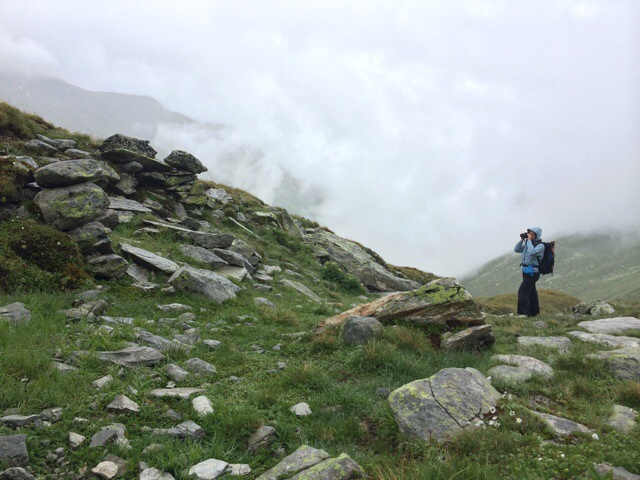Het is stil in Nederland.
“Mr. President,
We are here to discuss a tragedy: the downing of a commercial airliner and the death of 298 innocent people. Men, women and a staggering number of children lost their lives, on their way to their holiday destinations, their homes, loved ones, their jobs or international obligations. Since Thursday I’ve been thinking how horrible the final moments of their lives must have been, when they knew the plane was going down. Did they lock hands with their loved ones, did they hold their children close to their hearts, did they look each other in the eyes, one final time, in a wordless goodbye? We will never know.
The demise of almost 200 of my compatriots has left a hole in the heart of the Dutch nation, has caused grief, anger and despair. Grief for the loss of loved ones, anger for the outrage of the downing of a civilian airplane and despair after witnessing the excruciatingly slow process of securing the crash site and recovering the remains of the victims. …”
Speech to the UN Security Council by Frans Timmermans, Minister of Foreign Affairs, the Netherlands
It seems to me lately we are confronted again and again by waves of news of people suffering from violent conflicts they might have no active part in. News from Syria, Nigeria, Afganistan, Sudan, Irak, Palestine and many other places across the globe, like the Ukraine. And now the Netherlands – the country I was born and grew up in – mourns, is quiet.
Many of us are lucky. Our lives continue, almost as usual. And I have been feeling a little guilty about looking forwards to and preparing for our next fieldwork campaign of the Traversar Pässe Project. But perhaps we owe it to our loved ones, all those who do not have the possibility to do so and who have passed too young, to make the most of our lives, to enjoy it and make the best of it.

Remains of one of the many old incarnations of the road leading from the north over the San Bernardinopass.
Last year a small team commissioned be the Archaeological Service of the canton of the Grison (ADG), started a survey project of the main passes of the Grison. We started with the San Bernardino region. This weekend we head into the field again. The Oberalp– and Lukmanierpasses are the main focus of this year’s campaign. This is all the more pressing as large construction works are planned for the near future, which should lead to the connection of the skiing areas of Andermatt and Sedrun.
Not much is known about the archaeology of the region yet. But with these important passes and the important Monastery in Disentis/Mustér the region has had a prominent role in more recent history of the Alps of Central Switzerland. Also the regions in the cantons of Uri and Ticino west of the Oberalppass and southwest of the Lukmanierpass have been studied during the past 2-3 decades by the Leventina (Hess et al 2010) and the Gottthard Projects of the University of Zürich (Primas et al 1992) and a rescue archaeological project in the Urserenvalley (Urner Historisches Neujahrsblatt 2013, e.g. Auf der Maur & Cornelissen 2013). We thus expect our study area to have much archaeological potential. The first deskbased work seems to confirm this.
Simultaneously, the documentation of remains of WWI fortifications near the Umbrailpass will continue. We will also host the kAltes Eis-Project whose team will undoubtely make us run up to many faraway ice patches high up the end of some valley to look for archaeological remains.
We will have limited internet access in the Vorderrheinvalley, but hope to report whenever possible of our progress. Most likely here or on twitter (hashtag #traversar). You might also want to keep an eye on the Alpine Archaeology facebookpage.
Heading to the Vorderrhein we will be gratefull that we are able to continue doing such fascinating archaeological work in a beautiful part of the world with great friends and colleagues and fab archaeologists.
AUF DER MAUR, C. & CORNELISSEN, M. 2013. Die spätmesolithische und bronzezeitliche Fundstelle Hospental-Moos. Ein Einblick in das urgeschichtliche Urserntal. Historisches Neujahrsblatt, 68, 37-84. (As well as furhter contributions in this volume).
HESS, T., REITMAIER, T., JOCHUM ZIMMERMANN, E., BALMER, A., DOBLER, I. & DELLA CASA, P. 2010. Leventina – prähistorische Siedlungslandschaft. Archäologischer Survey im alpinen Tessintal und entlang der Gotthardpassroute 2007/2008: kommentierter Katalog. Jahresbuch der Archäologie Schweiz, 93, 173-193.
PRIMAS, M., DELLA CASA, P. & SCHMID-SIKIMIC, B. 1992. Archäologie zwischen Vierwaldstättersee und Gotthard: Siedlungen und Funde der ur- und frühgeschichtlichen Epochen, Bonn, Habelt












